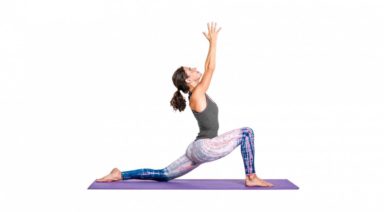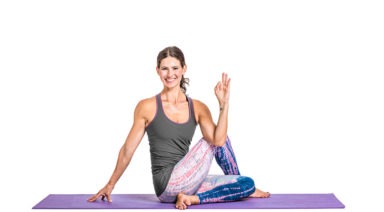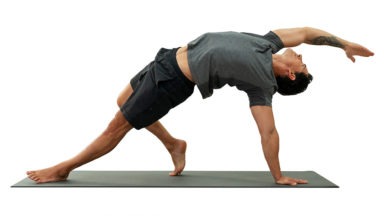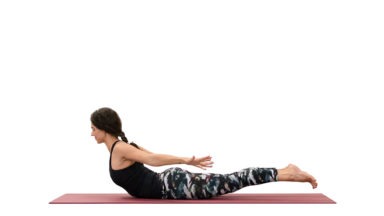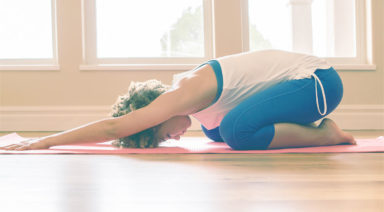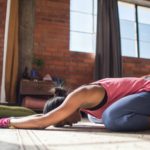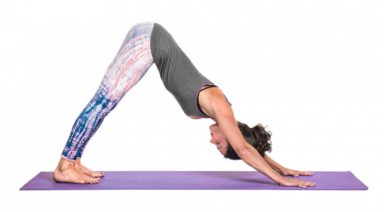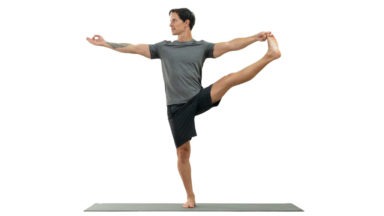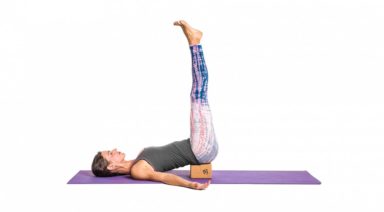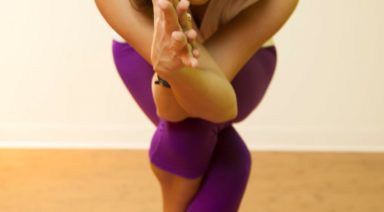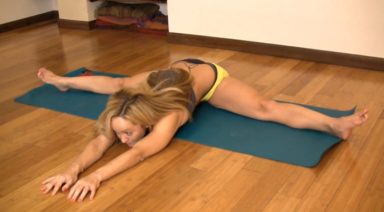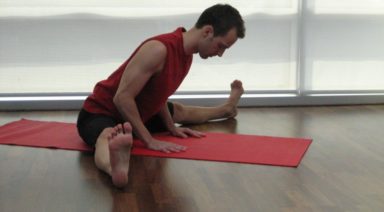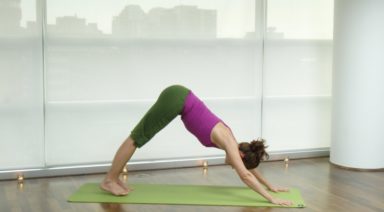Top 10 Yoga Poses for Headaches
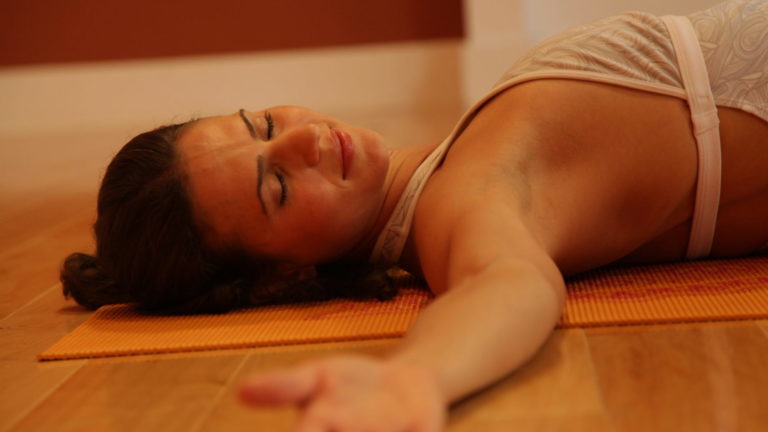
Yoga can be a beneficial therapeutic tool for relieving headaches brought on by muscle tension and stress. The majority of headaches originate from muscle stiffness and imbalances emanating from the neck and upper back. When headaches set in, using a series of restorative yoga exercises can greatly relieve both the cause and symptoms. Here are our top yoga poses and exercises that naturally treat headaches.
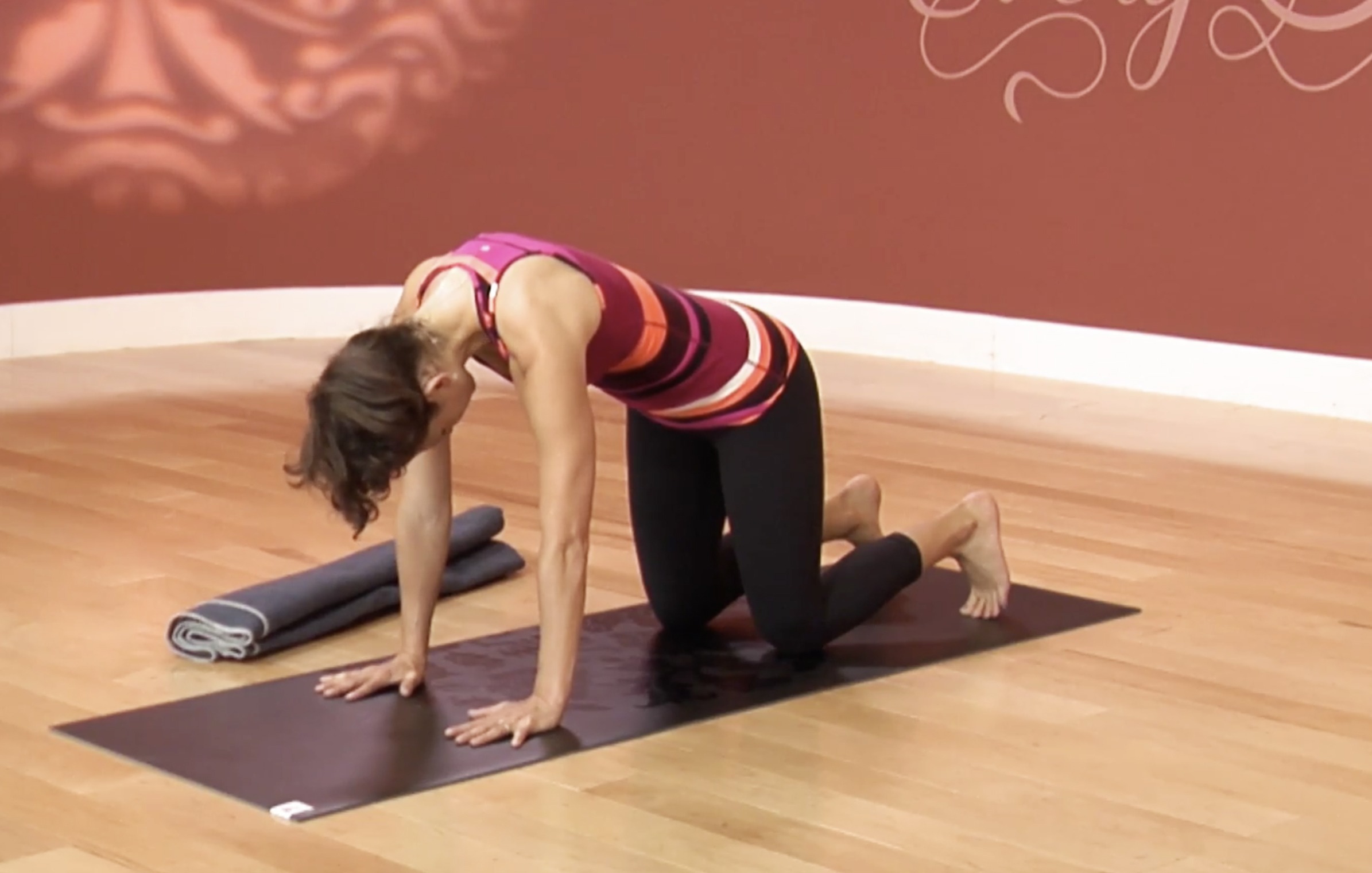
1. Cat Pose: The flowing motion of breath and spine helps release tension from the neck and upper back while also pouring refreshing energy through the body and mind.

2. Seated Twists: Besides increasing circulation throughout the entire length of the spine, the twisting motion in the upper spine (cervical region) often alleviates tension coming from the scalene muscles of the neck (anterior aspect).
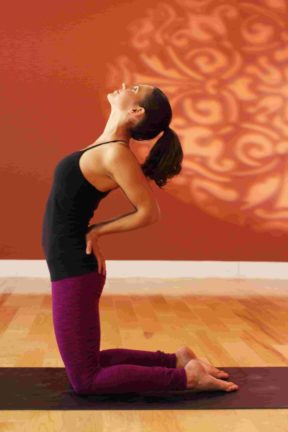
3. Chest Openers: Much of the tension in the back body is a result of muscle dominance from the front body (called Upper Cross Syndrome). Expanding the chest and front shoulder muscles helps break down muscular imbalances and frees the tension coming from the neck.
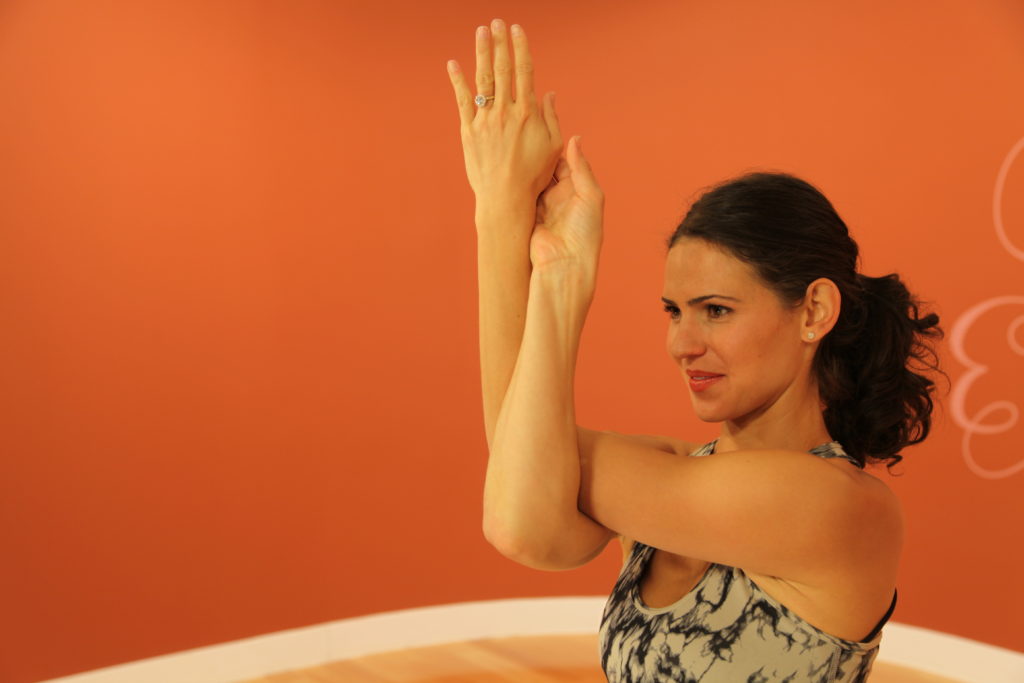
4. Eagle Arms: This simple crossed arm pose can be done in Mountain Pose or any natural seated posture. This back expander can reach well into the mid and upper back targeting problematic muscles around the shoulder blades and the base of the neck. Take time in this arm pose to breath slow and full into the upper back and insure that you perform this arm pose on both sides.

5. Simple Neck Stretches: Gently move through the various muscle fiber lines by allowing your head to float down to one shoulder with gravity, down across the chest and into the other side – repeat with a natural, unforced motion. Avoid letting the head fall back-keep the motion in a half circle from one shoulder to the other. Pause where you find extra areas of resistance.

6. Child’s Pose: A perfect restorative yoga pose that slightly inverts the body. A gentle flow of extra blood circulates into the head helping relieve tension. With the legs slightly separated, you can easily settle into deep core and back breathing to encourage a flood of circulation to reach deep into the body. Note that the head and neck should be absolutely comfortable. If needed, keep you arms forward or bend the elbows and rest the forearms by your chest/under your shoulders so the palms face up-this will greatly unload any pressure from the neck.

7. Two Knee Reclining Twist: Unlike our seated twists, this reclining twist can be far more restorative and held longer to bring deeper focus into relaxing the nervous system while the chest expands and rejuvenates the spine. Give extra attention to releasing the shoulders into the mat to release dominance of the shoulder and chest muscles.
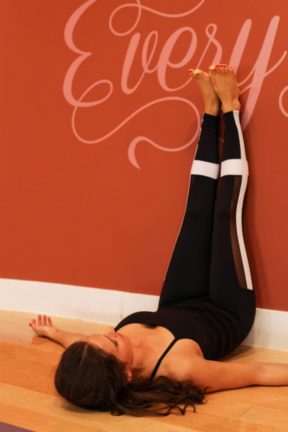
8. Legs Up The Wall Pose: This highly beneficial inverted pose is great for developing hamstring flexibility and for improving circulation in the lower limbs. For headaches, the extra flow of blood to the brain and the restorative support can be deeply relaxing and nourishing.
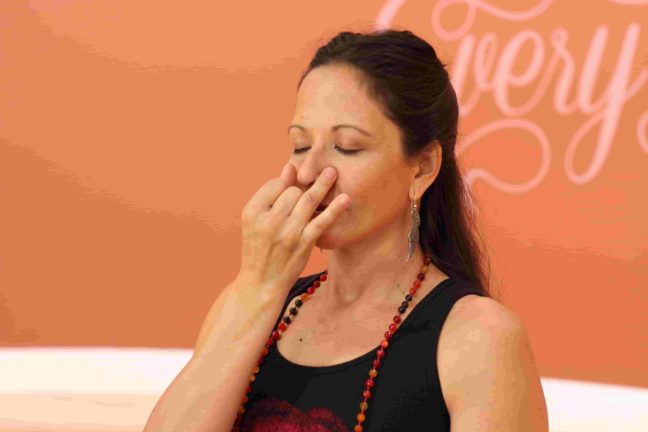
9. Alternate Nostril Breathing: The aim of alternate nostril breathing is to restore balance to the energy systems. With balance, we find release and calm. This yoga breathing exercise is easy to do for all levels and targets the nervous system by slowing brain waves, calming the mind, and purging stress.

10. Relaxation Pose: After doing a series of restorative yoga poses, take some time to simply relax and release in Savasana. Turn the focus away from the symptoms of your headache and settle into the sensation of mental and physical release. You may find a light eye pillow helpful in moving tension/pressure out of the eyes and forehead. Increase your comfort by placing a bolster under the knees and a thin pillow under the head. To complement the chest openers and reclining twists, lay with the arms open to the sides/palms facing the ceiling.
Try These Practices for Headache Relief
Partner Yoga Poses: The Power of Connectivity
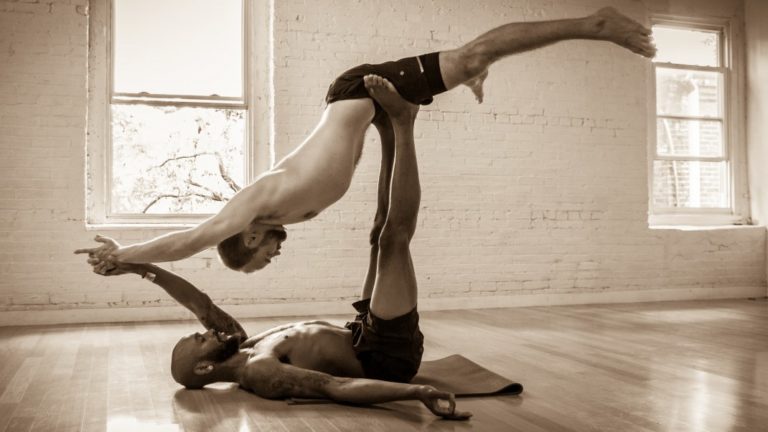
Want to heighten your yoga experience? Deepen your practice through body and mind with partner yoga: Partner Yoga Level One and Partner Yoga Level Two, led by instructor Pedro Franco, are perfect for yoga lovers. Partner yoga is a practice for any level of yogi. It can be done with a friend, loved one or acquaintance. Through this fun and connected series, you will learn to strengthen and amplify your practice by creating a greater sense of awareness in your own body while also paying close attention to the presence and movements of your partner. Partner yoga poses are great if you want to try something new or to spice things up in your relationship with more intimate couples yoga poses.
Things to Keep in Mind When You Start Your Partner Practice
- Partner yoga does not have to be complicated to be beneficial
- Partner yoga can simply be sitting back-to-back with your partner and breathing. It can be meditative. It can be as simple as massaging your partner’s sacrum after a stretch or wiggling your partner’s legs after a flying pose
- Partner yoga works on the same principles as individual yoga: Listen to your body and do what feels right. Challenge yourself, but only to a healthy limit
- If you’re new to partner yoga, take time to build strength, stability and flexibility in order to grow in the practice. Remember that in any form of yoga, there is no competition. For as many times as you stumble, you have just as many opportunities to try again. It is the act of connecting that matters most, not reaching a pose
Start with a Simple Partner Yoga Pose
Partner yoga can be a challenge for even the most advanced practitioner: It doesn’t matter how many hours you have spent on your mat, how many downward dogs or side crows you have done in your life. Maybe you are focused and resilient but need to work on your strength. Maybe you are strong and advanced in your movements but need to work on the act of giving yourself to your partner in a selfless manner.
Partner Seated Spinal Twist (Janu Sirsasana)
-
Begin by sitting back-to back in a comfortable cross-legged seated position
-
Each partner places their right hand on the other’s partner’s left thigh just above knee
-
Put your left hand on your own right knee
-
Coordinate your breathing by lengthening through spine on each inhale
-
During each exhale, twist a little more
-
Come back to center seated and repeat on other side
Learn the Art of Balancing with Your Partner
Partner yoga is not just about you. It is about the other person, too. Partner yoga poses exist to teach yogis and anyone interested in the practice how to gain better awareness and alignment of the body through precise adjustments and articulated movements.
Partner Boat Pose (Navasana)

-
Start by having each partner sit at the end of the mat facing each other
-
Each partner will bend their knees and press the soles of their feet together
-
Connect by clasping each other’s hands
-
While keeping the soles of your feet together, lean back slowly
-
Lengthen your legs and reach your feet upward to a bent-legged boat pose
-
Continue to breathe while you work on your balance
Create Greater Intimacy with Your Partner
Partner yoga can be as intimate as you allow it to be. Partner yoga is for anyone and everyone. It is about trust. It is about connection. It is about feeling the electric sensation between you and another person. It has the power to strengthen bonds between friends, unite strangers and fuse couples together in a new and stimulating way. Partner yoga has the powerful ability to create a profound level of intimacy between two people. The combination of breath, balance, trust and connection create for a unity that is unlike any other. It is assumed by many that partner yoga is purely sexual. This is not true. Yes, partner yoga can be a sensual experience if you want it to be, especially in couples yoga poses. It can also be an experience of unity in a completely different way. It can be whatever you want it to be. That is the beauty of the practice.
Partner Dancer’s Pose (Nataranjasana)

-
Start by standing up toward the back edge of your mat, facing your partner
-
Grab your partner’s right hand
-
Each partner will slightly bend the knees
-
Shift your weight onto your right leg
-
Bend the left knee and gran onto the inside of the left ankle or calf with your left hand
-
Gently pressing your shin into your left hand, open your back
-
Finally, reach your right arm up to balance
-
Repeat on the other side
Connect with Your Partner
Partner yoga is not just about you. Partner yoga has the word partner in it for a reason. It is a practice for two and is a practice that focuses on the unity of two. This is the idea that we should be incorporating in our partner yoga practice. Listen to your partner’s needs. Are they comfortable? Do they feel supported? Do they feel capable of holding you in a pose? Are they calm and present? Through the power of breath and touch, you will be able to sense your partner’s physical and emotional state. Yes, you need a partner to fly. You need a partner to pull your legs and lift you up. But your partner also needs you. It all comes back to unity. In these partner yoga poses and couples yoga poses, we rely on each other and so we must move in a way that represents that.
Double Standing Forward Bend (Uttanasana)
-
Stand back-to-back with your partner
-
Leave about 6 to 12 inches between you and your partner’s heels
-
Each partner will bend at the waist and come to a forward fold
-
Reach your hands behind you
-
Grab onto your partner’s hands
-
As you increase flexibility, you may be able to grab your partner’s forearms, elbows or even shoulders
-
Walk your heels closer until your bottoms are touching and straighten your legs
-
Lengthen the spine, head dangling toward the ground
Explore AcroYoga
AcroYoga is the combination of yoga, massage and acrobatics. As with partner yoga, which often includes acrobatic poses, shown in the Partner Yoga Level Two video, it is important to focus on the building blocks of your practice. Start with what you know and allow yourself to grow through continual practice, one step at a time. Motivation and repetition are the keys to helping you excel at AcroYoga. A common misconception about AcroYoga is that the size of your partner matters. This is not always true. Believe it or not, you have the ability to lift someone twice your weight. It is all about your technique.
As an extension of partner yoga, AcroYoga relies on the same principles: trust, communication and connection. Once you master these skills, you will be flying in the air and lifting people up with your feet in no time. Here is a fun beginner’s partner AcroYoga pose to test out your skills.
Flying Plank (A)
-
Base lies on back
-
Base places legs up in the air, heels over hips
-
Flyer starts by standing facing the base, with their toes almost touching the base’s glutes
-
Base bents knees slightly to bring feet to the hipbones of the flyer
-
Base and flyer connect hands, palm to palm and fingers interlaced
-
Flyer leans forward into the base’s feet
-
With flyer’s body in a single line, the base will receive the weight of the flyer in their feet
-
Base will then straighten their legs and stack their heels directly over the flyer’s hips
-
The flyer should have an engaged core, and the base should have straight arms and shoulder blades firmly grounded into the mat for maximum support and balance
From Flying Plank, yogis can work into the variation below: the flyer leans into the base’s hands instead of feet.

Flying plank photo credit: Amy Goalen
Just as we protect our family, friends and loved ones, we must protect each other when practicing partner yoga. Emotionally and physically, we must rely on each other to reach the ultimate goal of unity and connection.
Thank you to Amy Goalen for providing the beautiful main article image!






